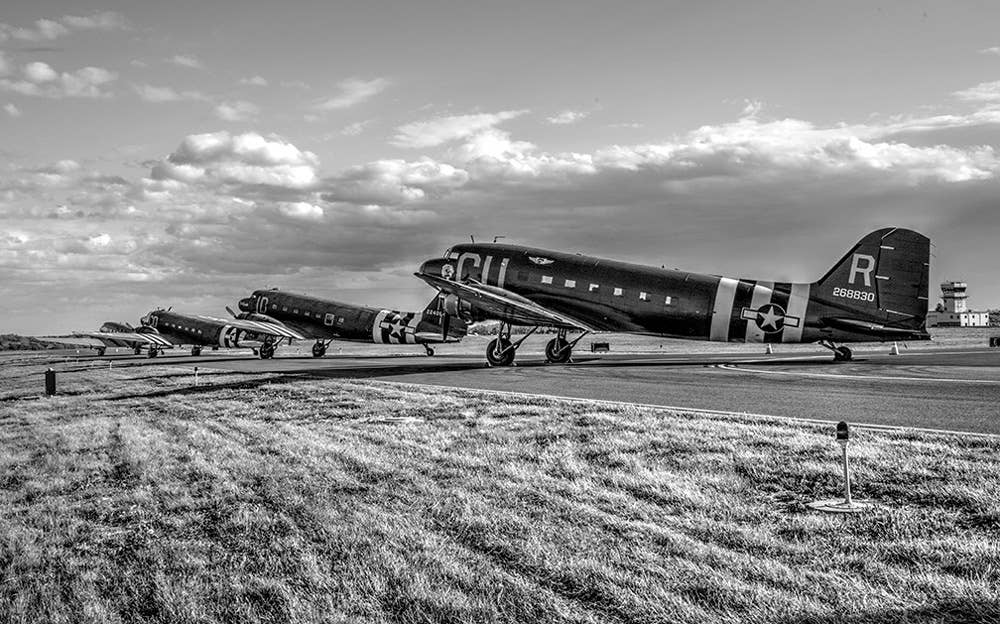
Douglas C-47 aircraft representing the D-Day Squadron line up at Oxford, Connecticut. Courtesy John Lott
"When the kids came over in 1944, they didn't have GPS…they didn't have 500 hours of time in the cockpit between them," says Doug Rozendaal, pilot of That's All Brother, a Douglas C-47 joining the 2019 D-Day Squadron in an epic trip across the Atlantic Ocean this week. He considers his crew very fortunate: Not only did they have advanced tools and weather reporting (and 50,000 hours of experience in the cockpit), but they also didn't see much of the water during the entire crossing. "We were on top of the clouds nearly the entire way. As an Iowa farmer, it was easy to imagine that there was nothing but cornfields underneath." The psychological boost he found was incredible.
The North Atlantic hadn't witnessed the crossing of a Pan Am Airways Douglas DC-3 flight since 1963. So when Clipper Tabitha May landed at Prestwick on Tuesday, May 21, it's no wonder her arrival attracted much attention. She was the first to arrive of the 2019 D-Day Squadron. The 1945-built airplane was originally designated as a C-47 (the military version of the airplane), and she's joining a dozen more U.S.based Douglas DC-3/C-47 aircraft in crossing the ocean to participate in a series of commemorative events led by Daks Over Normandy in Duxford, England, and Caen, France, from June 2 to 9, to honor the 75th anniversary of the invasion of Normandy—we know it as D-Day.
The twelve airplanes making the crossing this week followed the historic route, from Oxford, Connecticut, to Presque Isle, Maine, to Goose Bay, Labrador, to Narsarsuaq, Greenland, to Reykjavik, Iceland, then onto Scotland. One or two more may follow if maintenance and weather allow. Most departed Oxford on May 19, and the remainder (including That’s All Brother) began to arrive in Prestwick on May 22, with the expectation that most will complete the crossing by May 24.
Crews spent several days in Oxford, Connecticut, preparing for the journey. A particular focus were safety drills, including time in the water practicing with the life rafts they carried on board, and getting in and out of the immersion suits necessary for cold-water survival.
The controller on duty on May 20 at Narsarsuaq, Greenland, was in training the last time a C-47 came through, five years ago, when a pair of C-47s made their way from the United States to Normandy to commemorate a previous anniversary of the D-Day landings. One of those aircraft, Placid Lassie, is making the special trip again. In June 1944, she was assigned to the 74th Squadron, 434th Troop Carrier Group, and she towed gliders on D-Day and later dropped paratroopers over Normandy.
“We say it all the time: We use these aircraft as a hook to tell a story,” says Rozendaal. “If we had got on an airline flight with a suitcase full of t-shirts and patches talking about D-Day, we wouldn't have anywhere near the enthusiasm.” With the crossing safely in hand, the most important mission lies ahead: to honor those who served, those who gave all during the fight—and to keep their stories alive.

Sign-up for newsletters & special offers!
Get the latest FLYING stories & special offers delivered directly to your inbox






